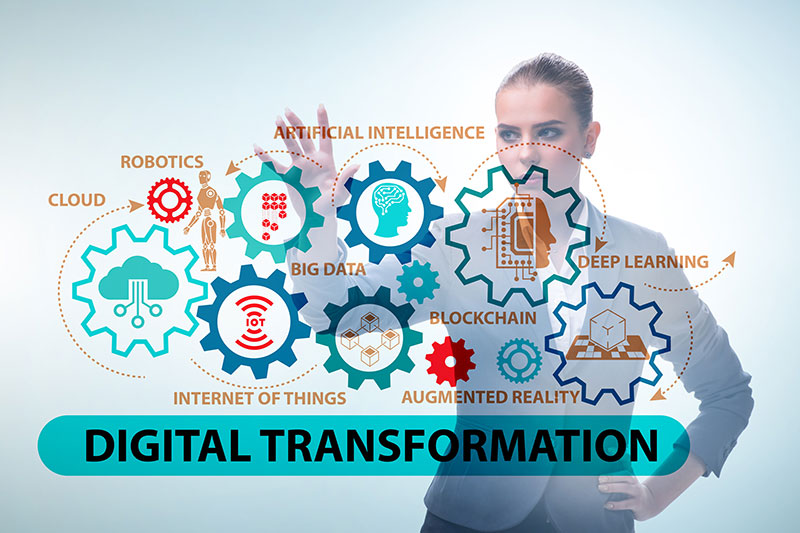Digital transformation has become the biggest buzzword in the business world, even in the healthcare industry. Digital transformation is not just about implementing new technology but also re-evaluating how things are done and understanding how they can be done more effectively. So, if you want to improve the efficiency and productivity of your healthcare organization through digitization, you can utilize medical data entry from an experienced service provider.
With digital transformation, it is now possible for patients to check their medical records online, order repeat prescriptions over the internet, or even see their doctor using video conferencing software like Skype. It also helps doctors to have access to a wealth of information about their patients at their fingertips which makes it easier for them to diagnose illnesses or recommend treatments quickly.
As technology keeps evolving day by day, keeping up with the emerging technologies and getting your team on board are not easy. It also means letting go of your outdated business processes and tactics. The US Healthcare market is growing rapidly and its digital health market is expected to reach 504.4 Billion USD in 2025 from 86.4 Billion in 2018, growing at a CAGR of 29.6%. So, here are some of the digital transformation trends expected in the healthcare industry for 2022:
- Artificial Intelligence: Artificial Intelligence has many benefits in healthcare industry. It helps with quick diagnosing and also speeds up reading test results so that physicians can determine the effective pharmaceutical compositions, prevent identity theft, minimize medical errors, and provide better customer experience. AI facilitates better decision making, information processing and better diagnosis speed. This allows physicians to offer optimal treatment to patients with the right approach. With the help of machine learning, pharmaceutical companies can develop effective medicines and enhance medical research and experiments.
- Virtual Reality: Augmented or virtual reality for healthcare comes with numerous advantages. It allows physicians to test new ideas and practices. With AR/VR, realistic 3D modeling of human organs and tissues can be developed for researchers and doctors to virtually test drugs to see how it would react in real life. It can be also used for training medical students and to practice surgeries. It can be used to treat psychological traumas, phobias, opioid addiction, phantom limb pain, as well as rehabilitation, and wound care. The use of AR/VR is expected to evolve in the coming years which will be useful for the healthcare industry. According to research by GlobeNewsWire, the market for Virtual Reality in Healthcare will reach $7 billion by 2026.
- Telemedicine and Remote Patient Monitoring: With telemedicine, physicians can consult their patients using their phones and in-person visits may no longer be required. Physicians can now conduct video or audio appointments on their smartphones, tablets, notebooks, and other internet-connected devices. This allows physicians to treat remote patients such as elderly people, or people who are on vacation, or at work etc. It also helps to monitor patients’ health. Telemedicine ensures you remote access to different types of medical services, saving you time and even money. In short, it allows physicians to provide convenient care for the patients and also increase access to specialists.
- Chatbots: Some industries have already implemented chatbots and it is slowly spreading to the healthcare industry also. According to market research by Statista, the size of the chatbot market is forecast to reach around 1.25 billion U.S. dollars in 2025. At present chatbots are used in two ways, patient-only chatbots that are used to track patients’ health data; and patient-clinician bots that serve as connectors between the two groups. The former is completely represented by a machine that gives evidence-based responses and friendly reminders. The latter includes human-to-human communication when required, and can work as a transmitter of medical test results or an assistant to schedule patient appointments.
- Big Data: Big data, along with AI enabled system, can be used to avoid preventable diseases, enhance the quality of life, reduce treatment costs and forecast outbreaks of epidemics. Big data in healthcare may include patient records, new drug discovery, disease research, early illness detection, health insurance records, hospital administration details and so on. Big data, along with AI, can drive the financial growth of the organization, provide healthcare professionals with best strategies to use data to have positive and lifesaving outcomes. Using big data along with predictive analysis can help detect patient deterioration, alert physicians with real time notifications, and make them take action quickly. It also helps with improved staffing and minimizes the risk of unwanted labor cost and resources. As per reports by Healthcare Weekly, big global data in the healthcare market is expected to reach $34.27 billion by 2022,growing at a CAGR of 22.07%. Globally, the big data analytics segment is set to be worth around $68.03 billion by 2024.
- Cloud Computing: Cloud computing is an application-based software infrastructure that stores data on remote servers, which can be accessed through the internet. All paper-based records of patients and other medical documents are now gone, instead these records are converted into digital format and stored in the cloud. It allows you to minimize storage cost, increase computing power and eliminate silos of data across the organization. It also ensures data privacy and security. As per reports from PR Newswire, the global healthcare cloud computing market is forecast to grow to $33.49 billion by 2025.
The healthcare industry is undergoing a huge digital transformation. It is not only about the innovative use of technology, but also about changing mindsets and processes to deliver better patient outcomes. So, reach out to a professional data entry service to convert all data into digital format so that it can be easily shared electronically and managed efficiently.




